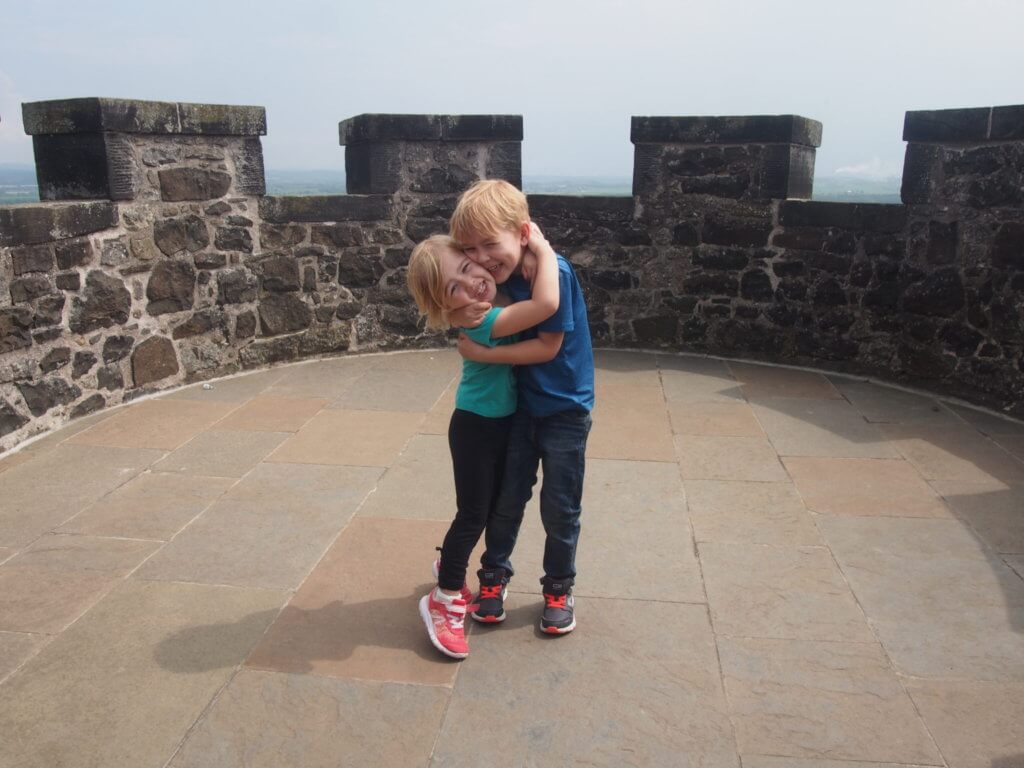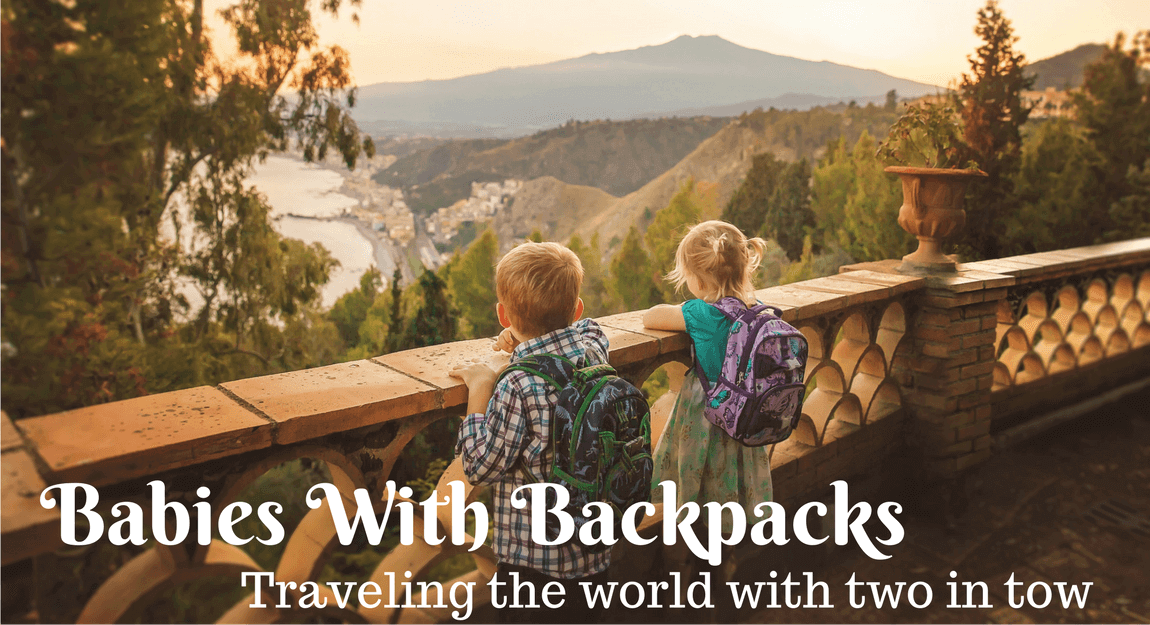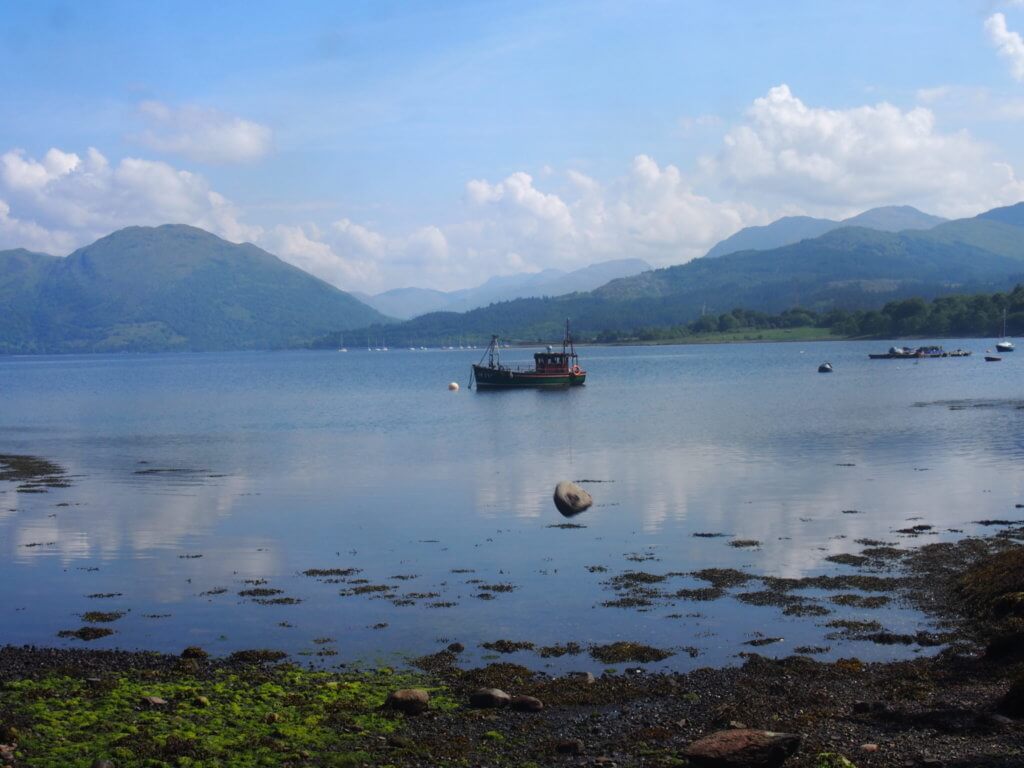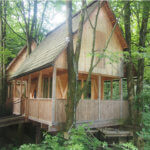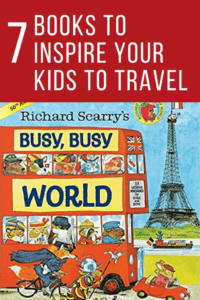After Edinburgh: Stirling Castle and Oban with kids
Remember those posts I’ve done in the past where I’ve bored you with details about various historical queens who are relevant to castles we were visiting? After our 3 days in Edinburgh, we visited Stirling Castle with the kids. So yeah, this is going to be one of those posts.
Before you bail, I’ll tell you that I’m at least including a lot of pictures? If that helps? Oh, and if you are here to hear about Oban with kids, just skip on down to the end. Oban is lovely, by the way.
Anyway, you’ve been warned.
Visiting Stirling Castle with kids
So anyway! Pressing on. Stirling Castle is only about 45 minutes from Edinburgh, which makes it an excellent Edinburgh day trip if you happen to be in the market for one. We headed there by car first thing in the morning on day 4 of our trip, after unexpectedly getting out of a parking garage for free (probably would have been at least 80 USD) because their system crashed so badly they could neither accept payment nor let anyone out without physically lifting the gate. Edinburgh, did we need another reason to love you?
Anyway. Stirling Castle with kids. It was a short drive there, one we considered breaking up with a quick stop in Falkirk to see The Kelpies, giant horse statues in a park near the city’s canals. We ended up bailing on this idea because we were running a bit late that morning, but ended up seeing them from the highway anyway. #winning.

So, Stirling Castle was of deep interest to me from the moment we started planning this trip because of one of my main nerdoms, British monarchy. (If you seriously need a reminder about my other nerdom, here you go). Stirling Castle one of the most significant castles in Scottish history, and was useful in that it was highly defensible: it is surrounded by cliffs on three sides, and until the late 1800s it guarded an important crossing of the River Forth, which essentially split the country in two.
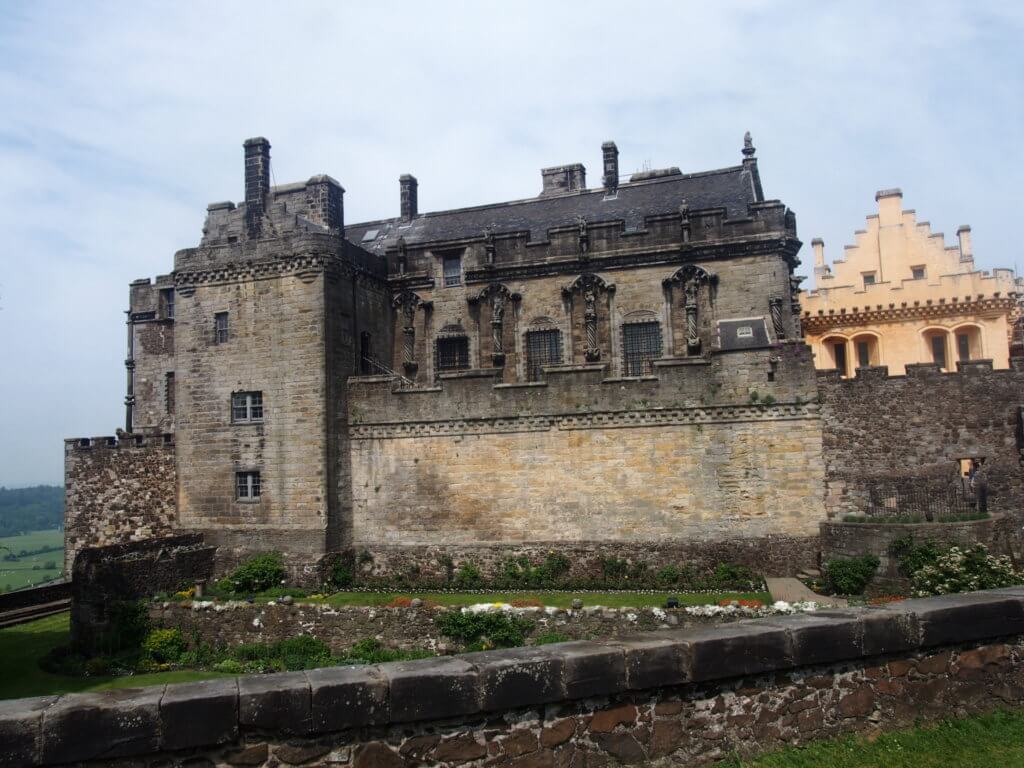
We purchased our tickets for Stirling Castle here ahead of time to avoid the lines. While we intentionally arrived in time to catch one of the free guided tours of the castle, we ended up skipping out on it very early on because the kids weren’t having it. Annoying, but you’ve got to roll with the punches.
Instead, we spent the entire time roaming Stirling Castle and looking around on our own. Even without the guide, it was pretty awesome. My favorite was definitely walking along the castle walls, while the kids preferred a visit to some specific kid-friendly rooms where they could play games. Overall, it was remarkably kid-friendly, so if you are headed to Scotland with kids I wouldn’t hesitate to stop there.
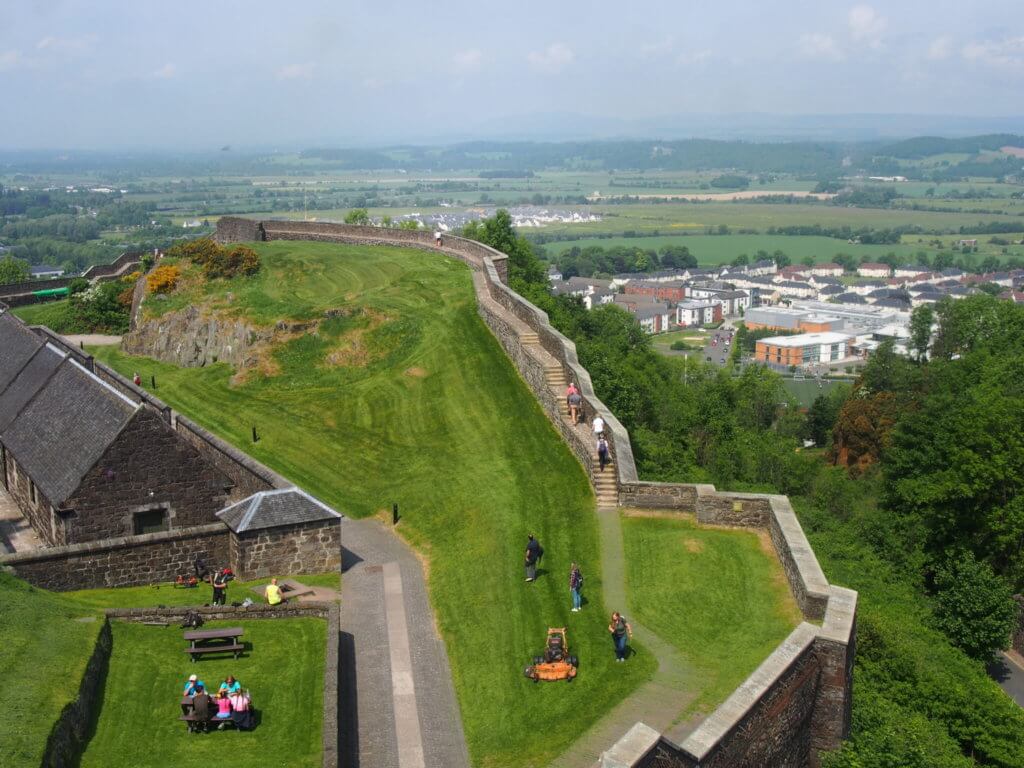
So, on to some history.
Stirling Castle is tied closely to two historical figures that I find very interesting: Margaret Tudor, and Mary, Queen of Scots. So, let’s do a bit of quick background.
Margaret Tudor was the oldest daughter of Henry VII, the man who claimed the throne of England essentially by virtue of his battlefield victory over Richard III more than any real birthright. She was the older sister of the infamous Henry VIII. Margaret was sent to Scotland before her 14th birthday to marry the 30-year-old Scots king, James IV, a man who had already fathered at least half a dozen children by various mistresses — all of whom were raised in a nursery he created at, you guessed it, Stirling Castle. Stirling also happened to be one of Margaret’s dower properties, and apparently she wasn’t overly thrilled to find the king’s illegitimate children being raised in it.
The marriage was intended to cement a lasting peace between England and Scotland, which was a traditional ally of the French. This worked for a while, but after the death of Margaret’s father, her brother, Henry VIII, declared war on the French. Despite the “Treaty of Perpetual Peace,” James IV (himself a very interesting person, fyi) promptly sought to invade England. He was killed alongside a large portion of the Scottish nobility at the Battle of Flodden, leaving Margaret — who’d already endured the deaths of four children — pregnant and the mother of the 18-month-old King James V.
Margaret briefly reigned as regent on behalf of her son, but when she made a hasty and disastrous marriage to the Earl of Angus (“that young witless fool”), she lost the regency and custody of James V and his short-lived brother, Alexander. The marriage turned out to be a mess and Margaret spent most of the next two decades fighting for support to regain custody of her son and a divorce from the avaricious and unfaithful Angus, who was essentially holding James V hostage by his teen years. Eventually her son came of age and threw off his stepfather/guardian, and eventually Margaret did get her divorce, but only after tremendous hardship and struggle. It is interesting to note that her brother, Henry VIII, probably the most famous divorcee in history, heartily disapproved of her efforts to be rid of Angus.
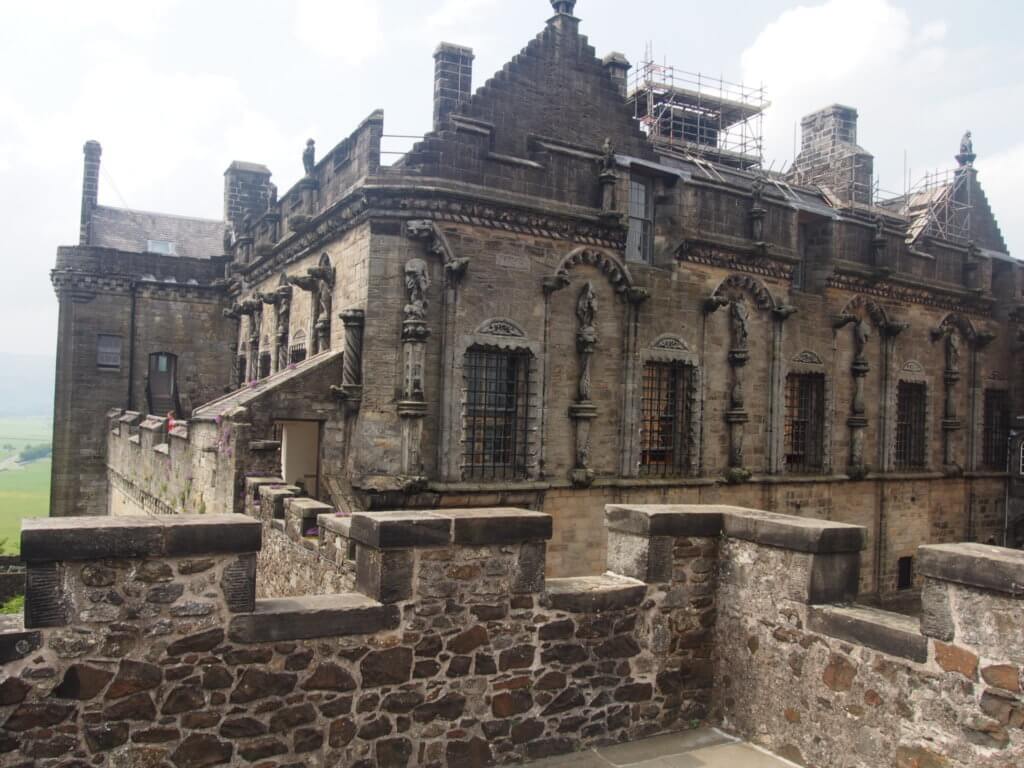

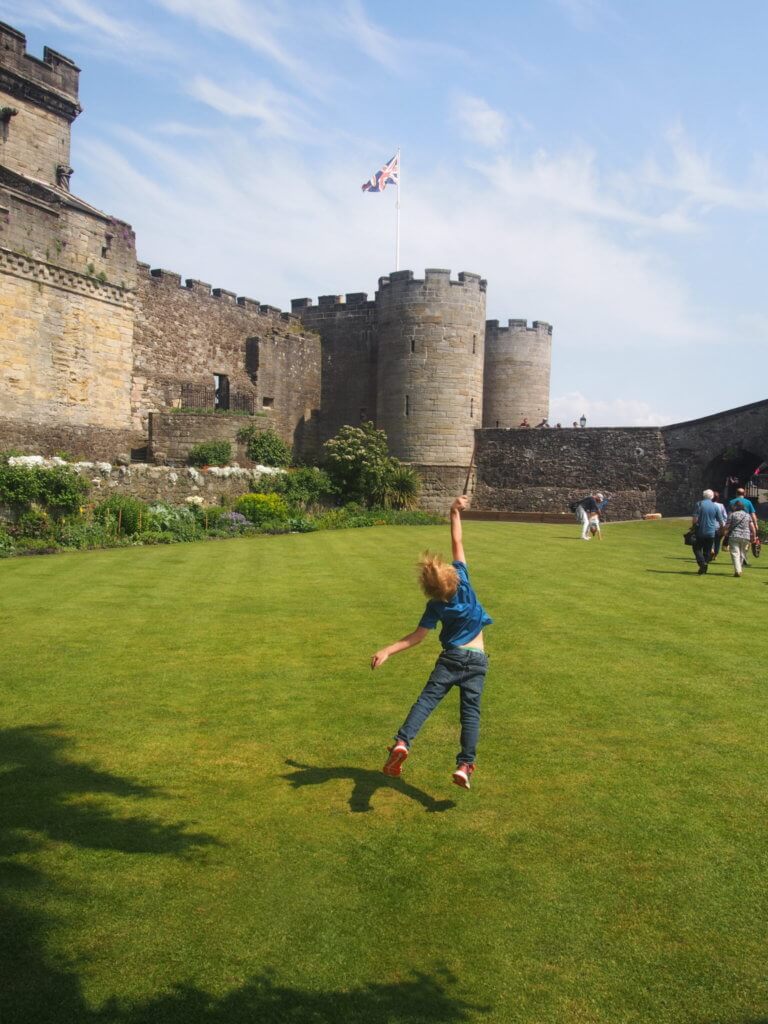

So, Stirling was also the home to Mary, Queen of Scots. In some ways, her life mirrors that of her grandmother, Margaret Tudor — with the notable exception that Margaret didn’t end her life on a foreign scaffold.
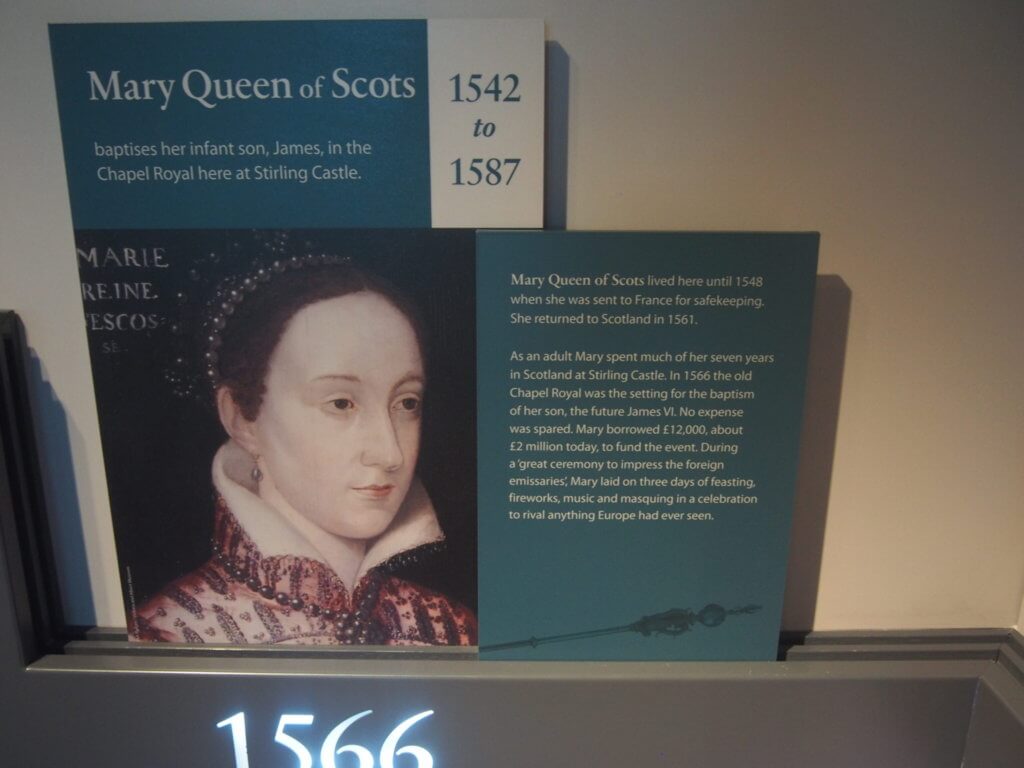
Mary was the daughter of Margaret Tudor’s son, James V, who died six days after her birth, leaving her the infant queen of Scotland. She was crowed at Stirling Castle. She was ultimately sent to France for safe-keeping as a child and betrothed to the future king of France, and in her absence her country became increasingly Protestant and increasingly less interested in the rule of the French regent, Mary’s mother. Mary became the Queen of France after the death of her father-in-law in 1559, but her reign was short-lived; her teenage husband, King Francis, died in 1560. Mary ultimately chose to go back to Scotland to take up her throne, but its leaders weren’t thrilled with the arrival of the young, Catholic and essentially French queen. Like her grandmother, Mary made a reckless decision in remarrying: four years after she was widowed, she married Henry, Lord Darnley, her first cousin through her grandmother Margaret Tudor’s only surviving daughter. The couple had one child, the future James VI, and at Edinburgh Castle you can see the impossibly tiny, spare room in which she gave birth to him.
Mary’s relationship with Darnley proved highly volatile due to his excessive drinking, philandering and general ill-treatment of the Queen (including the murder of her secretary). Within a year of their son’s birth, Darnley was found dead in the garden of his residence, which had been blown up with explosives. Mary was accused of orchestrating the death of her husband, as was. James, Earl Bothwell, was . Both were ultimately acquitted, but Bothwell chose to celebrate this victory by abducting the queen from Stirling Castle; they were married shortly after, 12 days after his divorce had been secured.From there, things pretty much continued to go downhill for Mary. Within a few months, she miscarried twins and a day later she was forced to abdicate her throne, separated from her husband and imprisoned.
Mary is invariably described as a famously beautiful woman of exceptional height, nearly 6 feet tall, who had an irresistible charm that ensured she found allies virtually anywhere she went. This helped her orchestrate various escapes from the prisons in which she was held, including climbing down a castle wall. Ultimately she managed to escape into England, where she had this thought that Queen Elizabeth would help her get her son and her crown back. Um. Yeah. Considering that Mary was considered the rightful queen of England by like, most of Europe, this strikes me as a fairly shitty plan. But you know, hindsight is 20/20. Anyway, Queen Elizabeth kept Queen Mary captive for 18 years, then executed her. Bummer.

Anyway, both women made some poor decisions — chiefly marrying what sounds like guys who are hot but complete assholes — but both Margaret and Mary were women of obvious courage. Interestingly, Queen Elizabeth of England executed Queen Mary of Scotland, but ultimately named Mary’s son, James, as her heir. He ruled both kingdoms as James VI/I.
James VI/I’s son, Charles I, was executed during the English Civil War. Seems like kind of a bad run for the family.
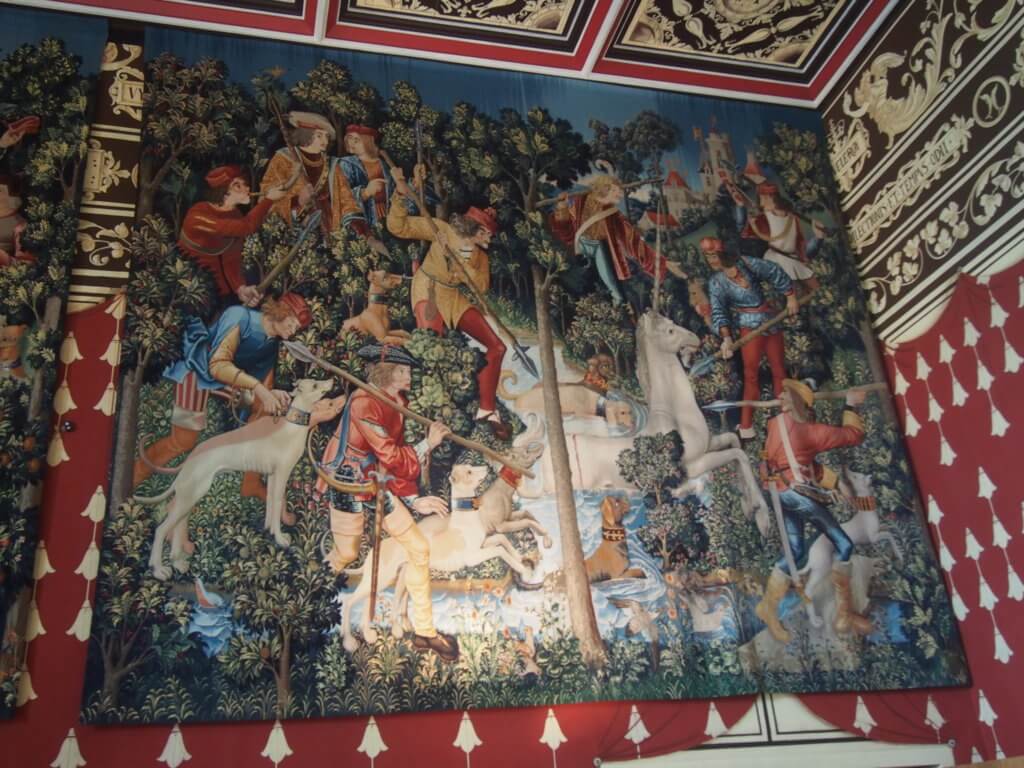

Anyway, so back to Stirling Castle. We ultimately ended up spending nearly three hours here, and we still didn’t explore every bit of the castle. There were plenty of places where we could relax on the grass and run around, which was a welcome break ahead of the driving we had to do later I’d say it would make an excellent day trip from Edinburgh, but for us we opted to make it a stop en route to our trip to the highlands.
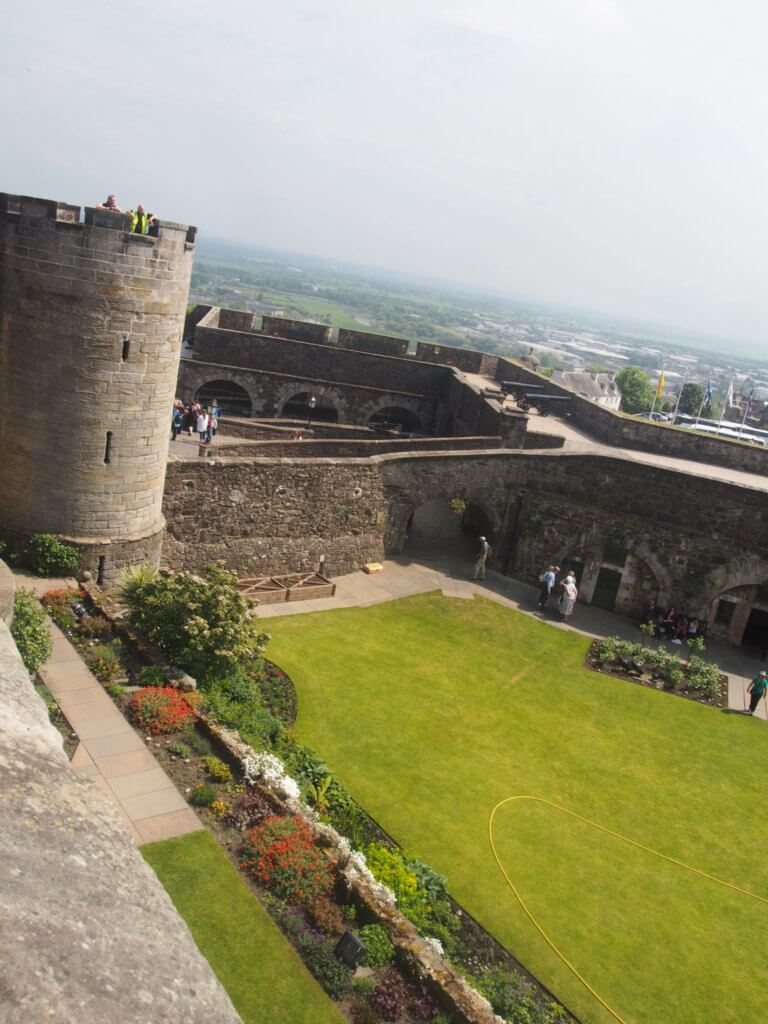
Next stop: Oban with kids
While recommended highly by Rick Steves, Oban was not on our original itinerary for Scotland. We’d intended to just make our way north toward Fort William, but when we couldn’t find accommodations we liked there we gave Oban a second look. I’m glad we did — it was a cute little fishing village! It would have been a relaxing place to spend a couple days, but we ended up staying just one night there.
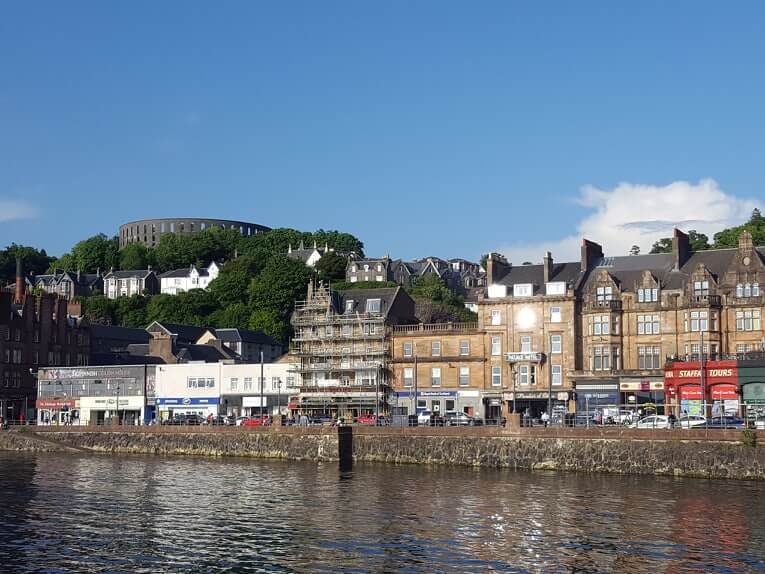
We arrived in Oban in the late afternoon, after a roughly two hour drive from Stirling Castle. Our short schedule didn’t leave a lot of time, but we had an excellent dinner at the Waterfront Fishhouse Restaurant right on the water. As was the case for our entire trip to Scotland, we stayed in an AirBnb.
Reminder: If you are considering booking at AirBnB for the first time, please consider using my referral link. You’ll get $40 in travel credit when you sign up, and I get $20 for our future travels. Win-win, no? Here’s the code: www.airbnb.com/c/kaseyh50
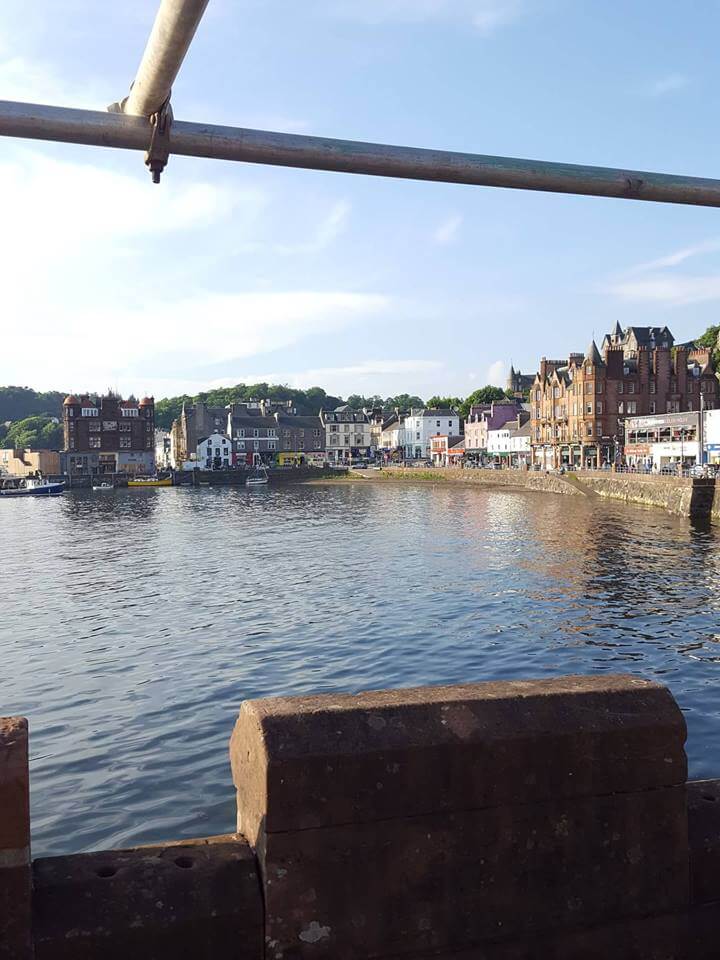
We had a relaxing night in Oban just having dinner and wandering the waterfront town a bit, then headed out the next day we headed out for the Scottish Sea Life Sanctuary.

Ok, so I feel a little guilty about this because no doubt they are doing nice conversation work and all that, but … I thought the Scottish Sea Life Sanctuary was pretty underwhelming given its high price tag (about 45 pounds). That said, our price was inflated because we were there on a Saturday, there are good deals for family discounts on the weekdays.
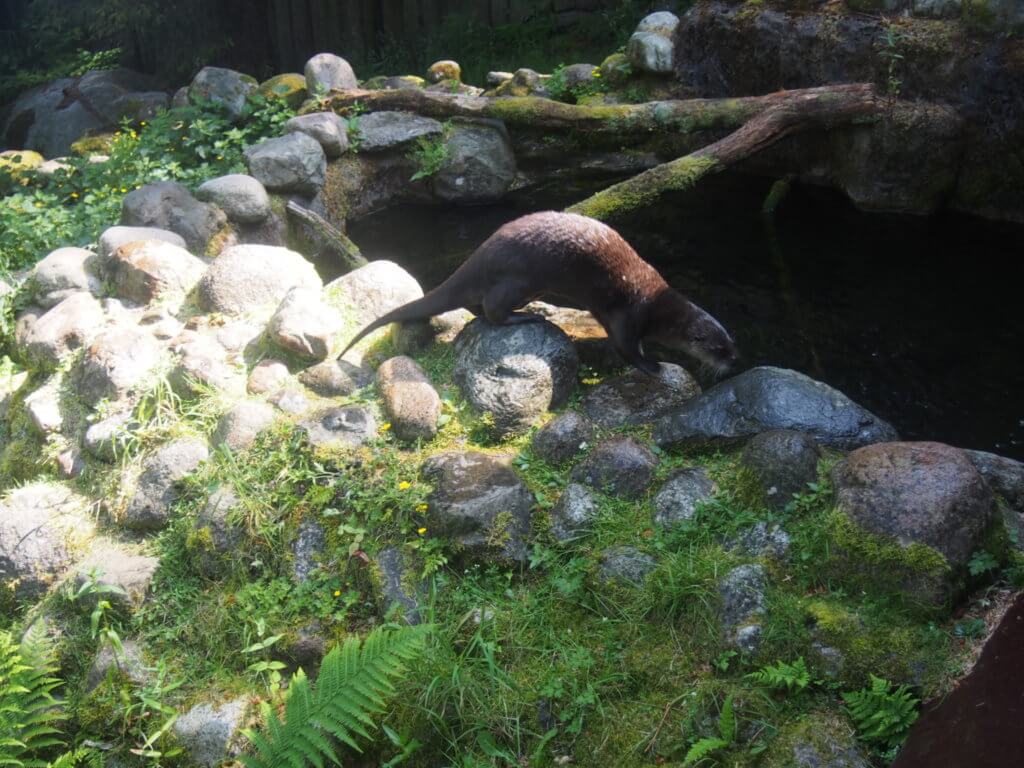

We did take a nice walk around the sanctuary’s “nature paths,” which was pretty even if we didn’t happen to spot any animals other than a squirrel.

Like this view! If Scotland does one thing right, it is scenery. Man.

Still, if we had to do it over I think I would have preferred to jump on one of the hour-long boat cruises to see a seal colony; we saw a bunch of these advertised while walking around. Alternatively, Oban is a great place to catch a ferry to the islands of Mull and Iona, so if we had more time we could have opted to check those out.
Road to Skye: the rest of the way
From Oban, our goal was to head up to the town of Balmacara, home of our AirBnB for the following two nights and our jumping off point for the Isle of Skye. We stopped for lunch in Fort William — I recommend stopping at The Explorer if you are there, by the way — and intended to stop to see the the Glenfinnan Railway Viaduct along the way. If you don’t recognize that name, chances are you’d recommend the bridge; it appears in the Harry Potter movies as the Hogwarts Express passes over it and has since become the most photographed bridge in Scotland.
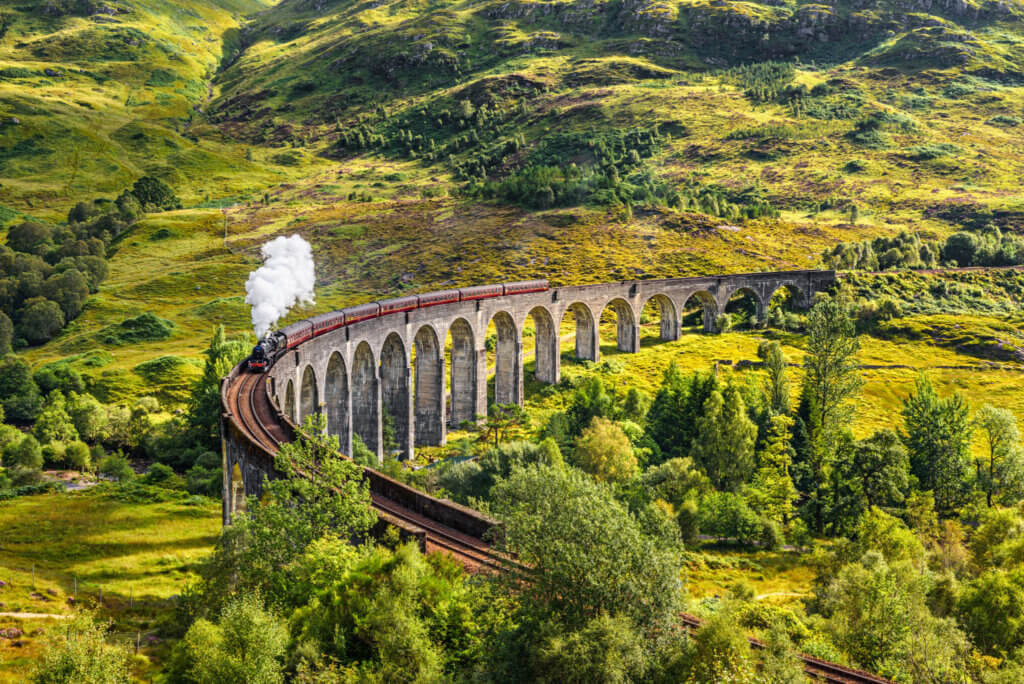
However, we were all getting a bit cranky about being in the car, it was getting ready to rain and since the train wasn’t going to run on Saturday afternoon at that time of year, we opted to skip it. While I was interested in seeing, I feared that adding almost an hour to our journey to see a bridge wasn’t going to thrill the crowd. Next time, perhaps!
I’ll talk about this more in my next post, but this feels like a good time to mention how astonishingly beautiful the terrain was as we drove throughout Scotland. As we got into the Highlands especially, it was like nothing we’d ever seen before. Chris isn’t usually the “let’s pull over and look at things” sort, but we ended up doing this several times just because it was too gorgeous not to.
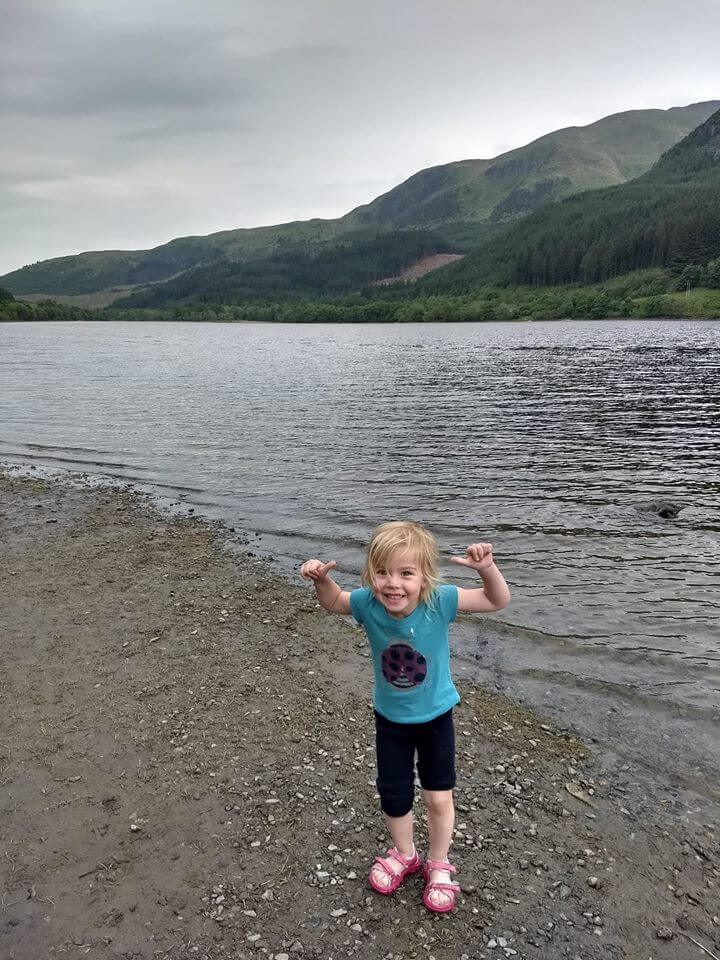
And, uh, astute readers may have noticed that Chris did end up driving this time around, despite my own excellent left-side driving in Ireland and intention to do so again in Scotland. This time, I managed to forget to bring my driver’s license on the trip; we took all carry-on bags for the 12-day trip, so I didn’t have the space for a purse and thus just handed my credit cards to Chris to put in his wallet. Forgetting, I guess, that a driver’s license has a purpose beyond identification and, before I had these kids who have aged the hell out of me, procuring alcohol. Or cold medicine, if we were still in Indiana. ANYWAY.
So Chris drove most of the way. Except for a roughly two mile stretch where I gave it a whirl on some narrow streets, and we learned quite quickly that Chris’ nerves weren’t up to enduring my driving after all. Wimp!
Adventure is the spice of life, no?
